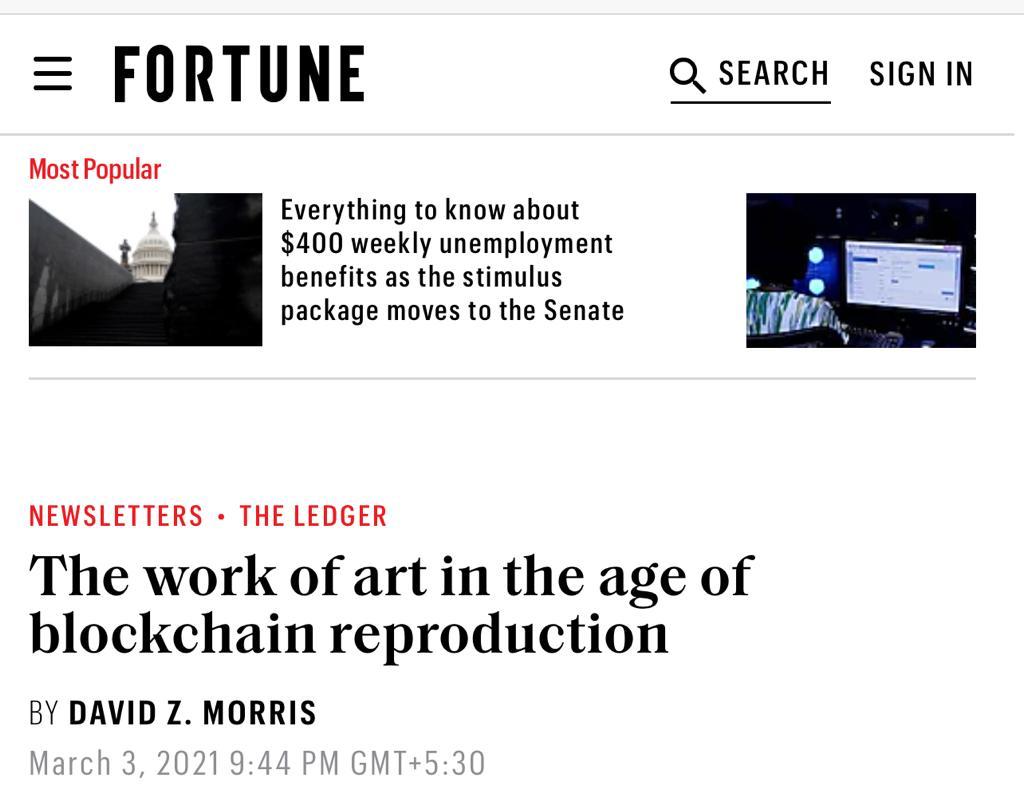Technologically, NFTs are quite simple if you already understand blockchain. An NFT is essentially no different from a Bitcoin, but it represents ownership of a piece of media – not just art, but tweets, videos, and memes. Because they’re tracked on a blockchain, they can’t be forged or hacked. But while there are more than 18 million interchangeable Bitcoins, there is only one copy of any single NFT, which is why they’re ‘non-fungible’: they can’t replace each other on a 1-to-1 basis.
But uniqueness is only part of the equation of art’s value. The philosopher Walter Benjamin argued in 1935 that the appeal of objects like paintings relies on an ‘aura’ that sticks to an original physical object. This became obvious when it became technologically possible to create thousands of copies of, say, the Mona Lisa: the copy was clearly not a replacement for the original. Copies don’t carry history. Standing in front of the real thing, knowing that it was literally touched by greatness, is essential to its appeal – and its market value.
Read the full article on Fortune

